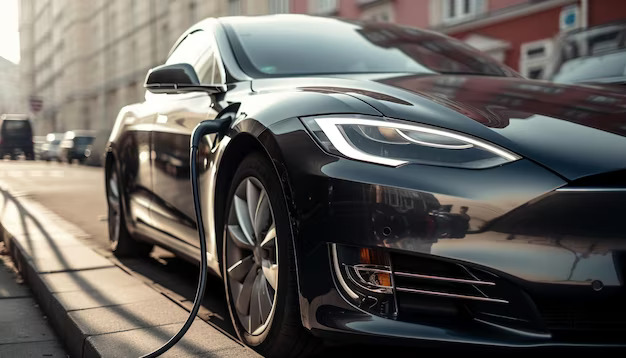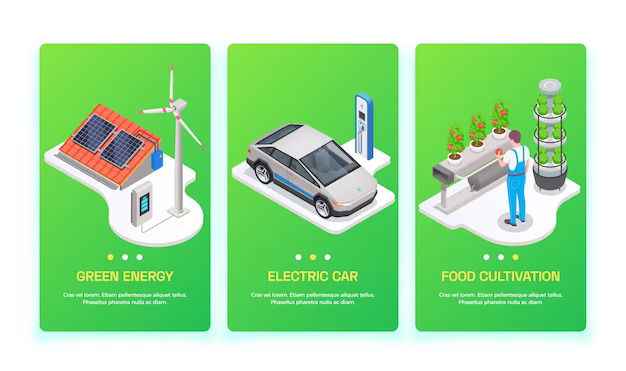Table of Contents
Introduction
The Indian government’s push for clean energy has encouraged the growth in the adoption of Electric Vehicles over conventional gasoline vehicles changing the consumer preferences.

According to data on the government’s Vahan portal, total of 9,89,000 EVs (Approx.) were registered with regional transport offices in 2022. This is already three times than in 2021. This data shows that, EVs are slowly and steadily becoming 1st choice for the buyers.
Due to growing worldwide concern over climate change and the need for sustainable mobility, the vehicle industry has undergone an important transformation recently. India, as one of the world’s largest automobile markets, plays an important role in shaping the future of electric vehicles (EVs). India has to make the switch to electric vehicles in order to achieve energy security, economic growth, and a reduction in emissions and pollution. In this article, we will explore the possibilities and difficulties of electric vehicles in India, along with the strategy required to bring about this major shift.
The Present State of Electric Vehicles in India
As per government’s Vahan portal Data, Cumulative sale of EVs in India till 30th March, 2023 were 11,65,057 units hitting the million milestone.
As of the current date, electric vehicles account for a small fraction ( i.e. only 0.4%) of India’s overall automotive market (as per PIB dated 19th July 2022: India has a total of 13,34,385 units Electric Vehicles and 27,81,69,631 units non-Electric Vehicle in use). India is lagging primarily due to various factors such as limited charging infrastructure, high initial costs, range concern, and consumer awareness. However, the government and industry stakeholders have taken significant steps to promote the adoption of electric vehicles.
The Indian government has introduced several initiatives to support EV adoption, including financial incentives, tax benefits, and subsidies for electric vehicle manufacturers and buyers. Additionally, various state governments have implemented their own EV policies to further encourage the growth of electric mobility. (To know further about policies of Centre as well as state govt. you can visit website https://e-amrit.niti.gov.in/ ) Furthermore, the ‘Faster Adoption and Manufacturing of Electric Vehicles (FAME)’ program has been extended to encourage EV production and infrastructure development.
FAME-India
As a part of the National Electric Mobility Mission Plan 2020 (NEMMP 2020), the Department of Heavy Industries, Government of India formulated a scheme namely Faster Adoption and Manufacturing of Hybrid & Electric vehicles in India [FAME-India], wherein it is intended to support the hybrid /electric vehicle market development and its manufacturing ecosystem to achieve self-sustenance at the end of the stipulated period. This scheme is launched to reduce pollution form road transport sector, which is one of the main contributor of pollution in India.

The scheme has 4 focus areas i.e. Technology Development, Demand Creation, Pilot Projects and Charging Infrastructure. FAME-II is being implemented for a period of 3 years W.E.F. 1st April 2019 with a budget allocation of 10,000 Cr.
The incentives offered in the FAME India scheme phase II are:
| Sr.No. | Total Approximate Incentives | Approximate Size of Battery |
| 1 | Two Wheeler: Rs 15000/- per kWh upto 40% of the cost of vehicles | Two Wheeler: 2 kWh |
| 2 | Three Wheeler: Rs 10000/- per kWh | Three Wheeler: 5 kWh |
| 3 | Four Wheeler : Rs 10000/- per kWh | Four Wheeler: 15 kWh |
| 4 | E Buses: Rs 20000/- per kWh | E Buses: 250 kWh |
| 5 | E Trucks: Rs 20000/- per kWh |
Source: e-Amrit website of NITI Ayog
Rise of Electric Two-Wheelers and Three-Wheelers:
Electric two-wheelers and three-wheelers have emerged as the early adopters of electric mobility in India. With their cost-effectiveness and suitability for short-distance commutes, these vehicles have gained popularity, especially in urban areas. Companies like Ather Energy, Bajaj Auto, Okinawa, Ola Electric and Hero Electric have made significant strides in manufacturing electric scooters and bikes, providing sustainable alternatives to conventional bikes.
Moreover, electric three-wheelers, commonly used as shared last-mile connectivity solutions, have also witnessed substantial growth. E-rickshaws and e-autos have become a common sight on Indian roads, replacing traditional autos.
To read more about the Different types of Electric Vehicles you can visit below link: https://medium.com/@infoblognews4u/different-types-of-electric-vehicles-embracing-the-green-revolution-6a36c119cbf6

Challenges to Overcome:
Despite the progress, the electric vehicle ecosystem in India faces several hurdles that hamper its rapid growth:
- Charging Infrastructure: The lack of a robust charging infrastructure remains one of the primary barriers to EV adoption.
- High Initial Cost: Electric vehicles typically have a higher upfront cost compared to conventional vehicles. While operational and maintenance costs are lower for EVs, the initial investment can deter price-sensitive consumers.
- Limited Range and Charging Time: Improving battery technology is essential to increase the driving range of EVs and reduce charging time.
- Consumer Awareness: Many consumers are still unaware of the benefits of electric vehicles, their cost-saving potential, and the environmental advantages.
- Supply Chain and Local Manufacturing: India’s electric vehicle industry heavily relies on imports for crucial components like batteries.
Future of Electric Vehicles in India: Strategies for a Green Revolution:

To ensure a successful transition towards electric mobility, India needs a comprehensive and coordinated strategy involving all stakeholders – government, manufacturers, consumers, and infrastructure providers.
Let us discuss some strategies to improve EV vehicle market:
- Charging Infrastructure Development: The Department of Heavy Industries has recently sanctioned 2636 charging stations in 62 cities across 24 States/UTs under FAME India scheme phase II.(Source: e-Amrit website of NITI Ayog). Accelerating the establishment of charging infrastructure network across the country is the key, which include setting up fast-charging stations in urban centers, highways, and residential areas.
- Incentives and Policies: The government should continue offering incentives and tax benefits to EV manufacturers and buyers to make electric vehicles more affordable and attractive. Strengthening existing policies and introducing new ones will further drive EV adoption.
- Battery research: Invest in battery research & development to advance battery technology, lengthen battery life, lower costs, and quicken charging.
- Public Awareness Campaigns: Public awareness campaigns to inform the public about the advantages of electric vehicles, debunk common misconceptions, and stress the long-term financial and environmental benefits.
- Use in Public Transport: Promote the usage of electric cars in fleets used by businesses, such as taxis, buses, and delivery vehicles.
Conclusion
The future of electric vehicles in India holds immense potential. While challenges exist, the concerted efforts of the government, industry players, and citizens can accelerate the adoption of electric vehicles. By investing in infrastructure, technology, and policies, India can pave the way for a cleaner, healthier, and more energy-efficient future, making electric mobility a central pillar of the nation’s sustainable development journey.
To know more about Hydrogen Fuel Vehicles and Future of Hydrogen Fuel cars in India, you can read our article on the link below: Embracing the Future: Hydrogen Fuel Cars in India (blognewstime.com)


It’s very informative and real growth for innovative technology for our nation
Thank you.
Thank you very much Sir